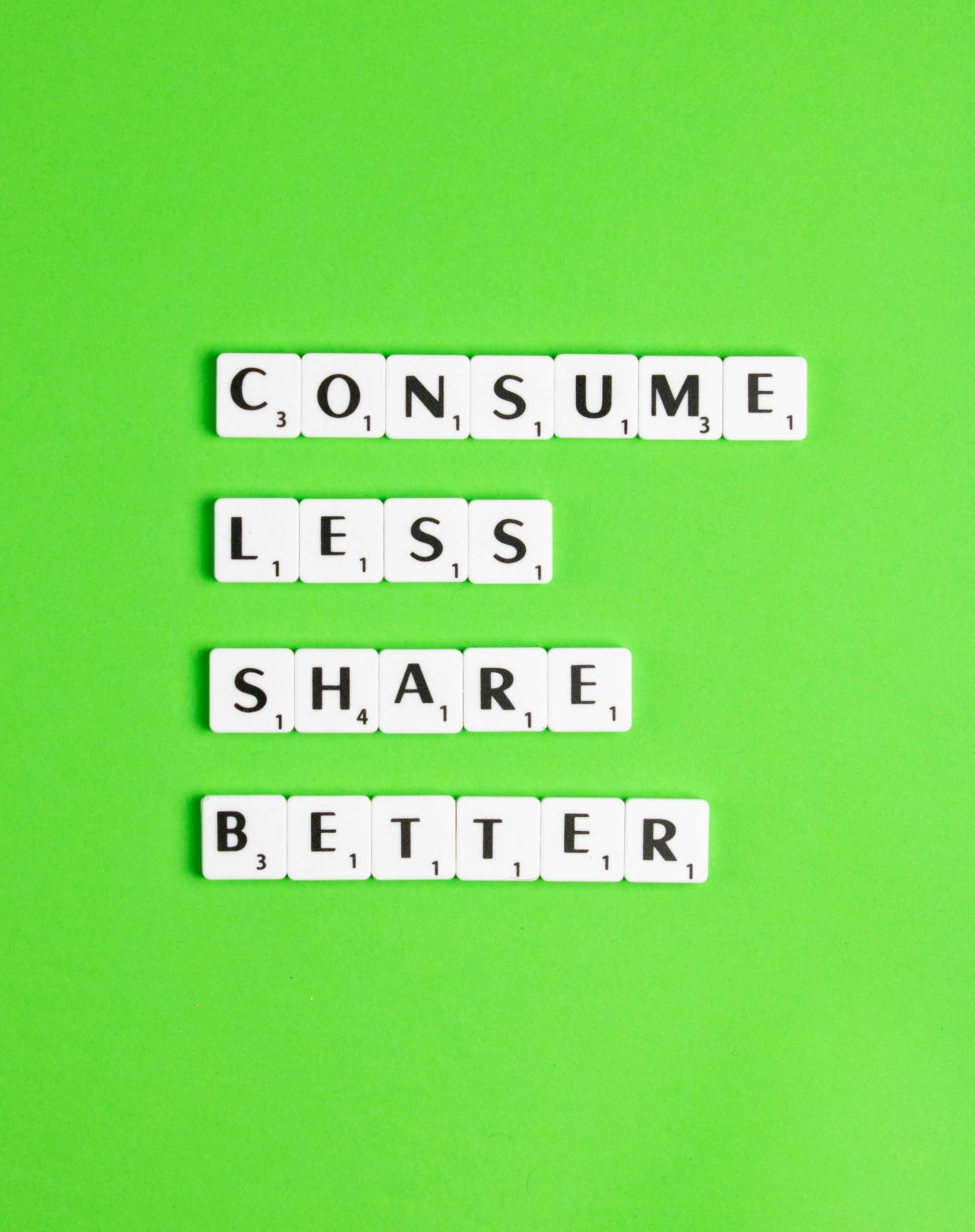Welcome to our exploration of slow fashion! In our fast-paced world, the concept of slow fashion offers a refreshing perspective that champions quality over quantity, sustainability over disposability, and mindful consumption over hasty purchases. Together, we’ll delve into what slow fashion truly means and why it holds such significance in our lives and in the health of our planet. Let’s take a moment to understand this important movement and consider how we can all play a role in making fashion a force for good. Have you ever wondered what slow fashion is and why it’s gaining so much attention lately? As we navigate through the labyrinth of ever-evolving fashion trends, it’s essential to understand the implications of our fashion choices on the environment, economy, and society. Together, let’s dive into the world of slow fashion and explore its importance in today’s fashion landscape.
What Is Slow Fashion?
Slow fashion is more than just a buzzword; it’s a movement that emphasizes mindful consumption and sustainable practices in the fashion industry. Unlike fast fashion, which prioritizes speed and cost efficiency at the expense of quality and ethical considerations, slow fashion aims to create clothing that is long-lasting, ethically produced, and environmentally friendly.
The Philosophy Behind Slow Fashion
Slow fashion promotes a holistic approach that considers the entire lifecycle of a garment, from its design and production processes to its impact on the environment and society. The ultimate goal is to create a system that contributes to sustainable development and fair treatment of all involved.
Key Characteristics of Slow Fashion
| Characteristic | Description |
|---|---|
| Durability | Prioritizes high-quality materials and craftsmanship to produce clothing that lasts longer. |
| Ethical Production | Ensures fair wages and safe working conditions for workers involved in the production process. |
| Environmental Impact | Minimizes pollution, waste, and the use of non-renewable resources in the manufacturing process. |
| Localism | Supports local artisans and manufacturers, reducing carbon footprint associated with global shipping. |
| Timeless Designs | Focuses on creating classic, seasonless pieces that don’t go out of style quickly, reducing the need for constant wardrobe updates. |
| Transparency | Provides clear information about production processes, sourcing of materials, and the working conditions of employees, allowing consumers to make informed choices. |
Why Is Slow Fashion Important?
Slow fashion addresses a myriad of issues inherent in the traditional fashion industry. By embracing slow fashion, we can mitigate adverse environmental impacts, promote ethical labor practices, and foster a culture of conscious consumption.
Environmental Sustainability
The rapid turnover in fashion trends contributes to a significant amount of waste and environmental degradation. Slow fashion prioritizes eco-friendly materials, reduces waste, and fosters a circular economy, which collectively helps in mitigating the industry’s carbon footprint.
Reducing Waste
The fashion industry is notorious for its wastefulness, with millions of tons of clothing ending up in landfills each year. Choosing slow fashion means supporting brands that design for durability and repairability, thereby extending the life cycle of garments and reducing overall waste.
Use of Sustainable Materials
Slow fashion brands often use organic, recycled, or upcycled materials that require fewer resources to produce and are biodegradable. This reduces environmental pollution and conserves natural resources. For example, organic cotton uses less water and avoids harmful pesticides compared to conventional cotton.
Promoting Ethical Labor Practices
Fast fashion often relies on exploitative labor practices, including low wages, poor working conditions, and even child labor. In contrast, slow fashion champions fair treatment of workers, ensuring they receive fair wages and operate in safe environments.
Fair Wages and Working Conditions
By prioritizing ethical production, slow fashion ensures that the people making our clothes are treated with dignity and respect. Brands committed to slow fashion are transparent about their supply chains and often partner with factories that adhere to strict labor standards.
Economic Considerations
Slow fashion supports local economies by sourcing materials and labor locally. This not only reduces transportation costs and emissions but also bolsters local communities, helping to create jobs and sustain traditional crafts.
Supporting Local Artisans
Many slow fashion brands collaborate with local artisans and craftsmen, thereby preserving traditional skills and providing employment opportunities within the community. This participation helps contribute to a more equitable global economy.
Encouraging Mindful Consumption
Slow fashion encourages us to be more intentional about our purchases. Instead of succumbing to fleeting trends, we are prompted to invest in high-quality, versatile pieces that stand the test of time.
Quality Over Quantity
When we focus on quality over quantity, we end up with a curated wardrobe filled with pieces that we truly love and will wear for years, which ultimately saves money and reduces our environmental impact.
Cultural Preservation
Slow fashion often incorporates traditional techniques and designs that have cultural significance. This helps preserve and celebrate cultural heritage, connecting us to diverse histories and stories through the clothes we wear.

How to Incorporate Slow Fashion into Our Lives
Adopting a slow fashion mindset doesn’t mean we have to overhaul our entire wardrobe overnight. Small, intentional changes can make a significant difference. Here are some practical steps to get started:
Assess Your Current Wardrobe
Before making any new purchases, take stock of what you already own. Identify pieces that you love and wear often, and consider why they work for you. This can help guide future purchases toward items that will have lasting value.
Invest in High-Quality Pieces
Look for garments made from durable materials and with good construction. While these items may have a higher upfront cost, their longevity ensures better value over time.
Support Ethical Brands
Research and support brands that prioritize ethical and sustainable practices. These companies are often transparent about their production processes and labor practices, making it easier to make informed decisions.
Buy Second-Hand or Vintage
Shopping second-hand is a great way to reduce waste and give pre-loved items a new life. Thrift stores, consignment shops, and online marketplaces offer a wealth of unique, high-quality pieces.
Learn Basic Repair Skills
Extend the life of your clothes by learning basic mending and repair skills. Simple fixes like sewing a button or patching a tear can keep garments in circulation longer and reduce the need for new purchases.
Participate in Clothing Swaps
Organize or attend clothing swaps with friends or community members. Swapping clothes is an excellent way to refresh your wardrobe without buying new items, and it fosters a sense of community.
Recycle or Upcycle Old Garments
When clothing is beyond repair or no longer wearable, look for recycling programs or get creative with upcycling projects. Turning an old dress into a tote bag, for example, can give new life to otherwise wasted materials.
The Future of Fashion: Moving Towards Sustainability
As awareness of the environmental and social impacts of fast fashion grows, so does the momentum toward sustainable practices within the industry. We are beginning to see a shift towards a more thoughtful approach to fashion, one that values quality, ethics, and sustainability over disposability and volume.
Technological Innovations
Advancements in technology are paving the way for more sustainable fashion practices. Innovations such as 3D printing, biodegradable fabrics, and eco-friendly dyeing processes are helping to minimize the environmental footprint of the fashion industry.
Legislative Efforts
Governments around the world are beginning to recognize the need for regulation to address the environmental and social impacts of the fashion industry. Legislation aimed at reducing waste, promoting ethical labor practices, and incentivizing sustainable production methods is on the rise.
Consumer Demand
Ultimately, the power to drive change lies in our hands as consumers. By making more conscious choices and supporting brands that align with our values, we can signal to the industry that sustainability and ethics are non-negotiable.
Corporate Responsibility
As consumer demand for sustainable fashion grows, more companies are beginning to prioritize corporate social responsibility (CSR) initiatives. These initiatives often include commitments to reduce carbon emissions, improve labor conditions, and invest in sustainable materials.
Education and Awareness
Raising awareness about the benefits of slow fashion and the impacts of our clothing choices is crucial. Educational campaigns, documentaries, and social media movements are helping to inform the public and encourage more sustainable behavior.
Collaboration and Innovation
Collaboration between designers, manufacturers, and consumers is essential for driving innovation in sustainable fashion. By working together, we can develop new materials, production methods, and business models that prioritize sustainability and ethical practices.

Common Myths About Slow Fashion
Despite its many benefits, slow fashion is often misunderstood. Let’s debunk some common myths to gain a clearer understanding.
Myth 1: Slow Fashion is Expensive
While slow fashion pieces can have a higher upfront cost due to their quality and ethical production methods, they often prove to be more cost-effective in the long run. Investing in durable, timeless garments means fewer replacements and ultimately less spending over time.
Myth 2: It’s Hard to Find Stylish Options
The slow fashion movement has grown significantly, offering a wide variety of stylish options that cater to diverse tastes. Many slow fashion brands collaborate with talented designers to create contemporary, fashionable pieces.
Myth 3: It’s Inconvenient
Adopting slow fashion habits may require a bit more effort initially, such as researching brands or learning repair skills. However, these habits can quickly become second nature and lead to a more satisfying and rewarding shopping experience.
Myth 4: Fast Fashion Is Necessary for Economic Growth
While fast fashion does generate significant revenue, its unsustainable practices lead to long-term environmental and social costs. Slow fashion promotes a more balanced approach, supporting local economies and fostering sustainable development.
The Global Impact of Slow Fashion
The shift towards slow fashion has the potential to create widespread positive change on a global scale. By supporting this movement, we can contribute to a more sustainable and equitable future.
Environmental Benefits
Reducing waste, minimizing pollution, and conserving natural resources are just a few of the environmental benefits of slow fashion. These efforts help combat climate change and preserve our planet for future generations.
Social Benefits
Slow fashion promotes fair wages and safe working conditions, helping to improve the lives of workers around the world. By supporting brands that prioritize ethical practices, we can help create a more just and equitable global economy.
Cultural Benefits
Preserving traditional skills and techniques is an essential aspect of slow fashion. This not only supports local artisans but also keeps cultural heritage alive, enriching our global tapestry of fashion.

Conclusion: Embracing Slow Fashion
Slow fashion is more than just a trend; it’s a movement towards a more sustainable, ethical, and mindful approach to clothing. By understanding its importance and incorporating slow fashion principles into our lives, we can make a positive impact on the environment, economy, and society.
Let’s take a moment to reflect on our own consumption habits and consider how we can contribute to the slow fashion movement. Whether through small changes or more significant commitments, every step we take towards slow fashion is a step towards a better future.
Together, we can make a difference. Let’s embrace slow fashion and advocate for a more conscious and sustainable world.



